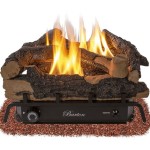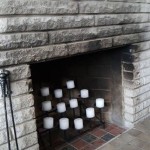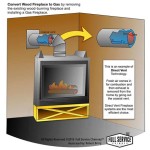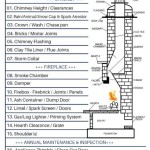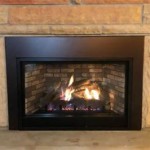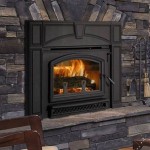Cost of Propane Tank for Gas Fireplace
Gas fireplaces offer a convenient and aesthetically pleasing alternative to traditional wood-burning fireplaces. They provide warmth and ambiance with the flip of a switch, eliminating the need for chopping wood, tending to the fire, and cleaning up ashes. While some gas fireplaces are connected to a natural gas line, many rely on propane tanks for their fuel source. Understanding the costs associated with propane tanks for gas fireplaces is crucial for homeowners considering this heating option.
The overall cost of using propane as a fuel source for a gas fireplace is influenced by several factors. These factors include the size of the propane tank, whether the tank is purchased or leased, the installation costs, the price of propane itself, and the frequency of refills. Each of these factors contributes significantly to the overall expense and requires careful consideration to accurately assess the financial implications.
Propane Tank Size and Purchase vs. Lease Costs
The size of the propane tank is a primary determinant of its initial cost. Propane tanks for residential use are typically measured in gallons. The most common sizes for gas fireplaces range from 20-pound (5-gallon) tanks to 120-gallon tanks. Smaller tanks, like the 20-pound variety, are often used for portable appliances such as grills and patio heaters, and may suffice for occasional fireplace use. However, for regular heating during the colder months, larger tanks are generally recommended.
The initial expense of a propane tank depends largely upon its size. A 20-pound propane tank, often found at hardware stores and gas stations, will typically cost between $30 and $60. These tanks are relatively inexpensive to purchase outright. However, their limited capacity necessitates frequent refills, which can become inconvenient and potentially more expensive in the long run, especially if the fireplace is a primary heating source.
Larger propane tanks, such as 120-gallon or 250-gallon tanks, are more suited for homes that rely on propane for multiple appliances, including fireplaces, water heaters, and stoves. These tanks provide a greater fuel reserve, reducing the frequency of refills. The purchase price of a 120-gallon propane tank typically ranges from $500 to $1,000, while a 250-gallon tank can cost between $800 and $1,500. These prices reflect the tank itself; installation costs are separate.
An alternative to purchasing a propane tank is leasing one from a propane supplier. Leasing can eliminate the upfront cost of buying a tank, making it an attractive option for homeowners who prefer not to make a significant initial investment. Lease agreements often include maintenance and repair services, providing peace of mind. However, leasing involves ongoing monthly or annual fees, which can accumulate over time. Lease fees for a 120-gallon tank may range from $50 to $100 per year, while larger tank leases could be more expensive. It's crucial to carefully compare the total cost of leasing over several years versus the cost of purchasing a tank to determine the most cost-effective option.
Furthermore, propane suppliers often have specific requirements regarding who supplies the propane if you lease a tank from them. Typically, you are required to purchase propane exclusively from the company that owns the tank. This can impact your ability to shop around for the best propane prices, potentially leading to higher fuel costs in the long term. Purchasing ensures you can choose your supplier freely.
Another factor to consider is hidden costs. Leases may have termination fees if the homeowner decides to switch suppliers or no longer needs the tank. Some leases also impose restrictions on property sales, requiring the new homeowner to assume the lease or pay a fee to remove the tank. Understanding the fine print of a lease agreement is therefore essential to avoid unexpected expenses.
Installation Costs and Safety Regulations
Proper installation of a propane tank is critical for both safety and efficiency. Installation costs can vary significantly depending on the size of the tank, its location (above ground or underground), and the complexity of the plumbing required to connect it to the gas fireplace and other appliances. Professional installation is strongly recommended, as it ensures compliance with local building codes and safety regulations. Ignoring these regulations can result in fines and, more importantly, pose significant safety hazards.
Above-ground propane tank installations are generally less expensive than underground installations. Above-ground installations typically involve placing the tank on a concrete pad and connecting it to the gas line. The cost for this type of installation usually ranges from $150 to $500, depending on the distance to the fireplace and the complexity of the gas line connections.
Underground propane tank installations are more complex and therefore more expensive. This process involves excavating a trench, burying the tank, and running the gas line underground. Underground tanks offer aesthetic advantages, as they are hidden from view, but the installation costs can range from $800 to $2,000 or more. The cost will be driven by the size of the tank, depth of the trench, soil conditions, and the length of the gas line. Permits are also typically required for underground installations, adding to the overall expense.
Gas line installation or modification can also impact the overall cost. If the existing gas line is not properly sized or located to accommodate the propane tank, additional plumbing work will be required. This can involve running new gas lines, installing regulators, and ensuring proper venting. Gas line modifications can add several hundred dollars to the installation cost.
Safety regulations stipulate specific requirements for propane tank placement and clearances. Tanks must be located a certain distance from buildings, property lines, and potential ignition sources. These regulations are designed to prevent fires and explosions. Local building codes often require inspections to ensure compliance with these safety standards, which can add to the overall installation timeline and expense.
Moreover, homeowners insurance policies may have specific requirements regarding propane tank installations. Failure to comply with these requirements could invalidate the insurance coverage in the event of an accident. Checking with the insurance provider to confirm coverage requirements is a prudent step before installing a propane tank.
Propane Prices and Consumption Rates
The cost of propane itself is a significant ongoing expense. Propane prices can fluctuate based on several factors, including supply and demand, seasonal variations, and regional market conditions. Monitoring propane prices and purchasing fuel strategically can help minimize expenses.
Propane prices are typically quoted in dollars per gallon. The national average price of propane can vary significantly throughout the year, with prices often rising during the winter months when demand is highest. Factors such as geopolitical events, weather patterns, and economic conditions can also influence propane prices. Checking with local propane suppliers and comparing prices is essential for securing the best deals.
Consumption rates for propane fireplaces depend on several factors, including the size of the fireplace, the frequency of use, and the insulation of the home. A typical gas fireplace might consume between 1 and 3 gallons of propane per hour when operating at its highest setting. Frequent and prolonged use of the fireplace can quickly deplete a propane tank and lead to frequent refills.
To estimate propane consumption, homeowners can consult the fireplace's owner's manual or contact the manufacturer for specifications. Understanding the British Thermal Unit (BTU) rating of the fireplace can also help in estimating propane usage. A higher BTU rating indicates a more powerful heating capacity, which typically translates to higher propane consumption.
Tank monitoring systems can help track propane levels and provide timely alerts when a refill is needed. These systems can range from simple gauges to more sophisticated electronic monitors that send alerts to a smartphone or computer. Monitoring propane levels can prevent unexpected fuel outages and allow homeowners to schedule refills when prices are favorable.
Improving the energy efficiency of the home can also reduce propane consumption. Proper insulation, weather stripping, and sealing air leaks can minimize heat loss and reduce the need to run the fireplace as frequently. Regular maintenance of the fireplace, including cleaning the burner and venting system, can also improve its efficiency and reduce propane consumption.
Finally, exploring alternative heating options can provide additional cost savings. Consider supplemental heating sources, such as electric space heaters or wood-burning stoves, to reduce reliance on the propane fireplace during milder weather. Smart thermostats can also help optimize heating schedules and minimize energy waste.

How Much Is A Tank Of Propane In 2024

Average Propane Tank Installation Cost 2024 Forbes Home

Propane Plus Tank Sizes Above Or Underground Installation

1 Propane Fireplace 100s Of Gas Fireplaces

Residential Propane Tanks What Size Tank Do You Need

Propane Tank Installation For Home

Propane Delivery In Allen S Oil

Gas Fireplace Cost Guide Unit Add Ons Installation More

Understanding Propane Tank Sizes Great Valley

Gas Fireplace Inserts Pros And Cons Of Ventless Fireplaces

